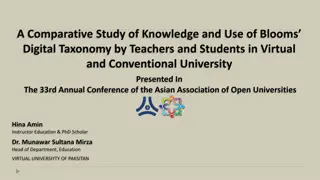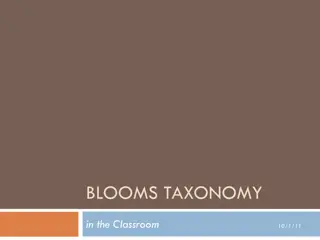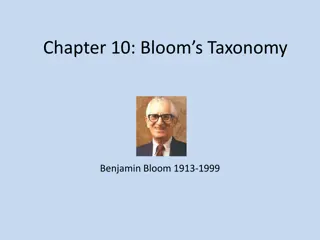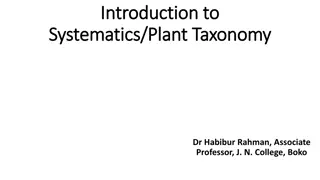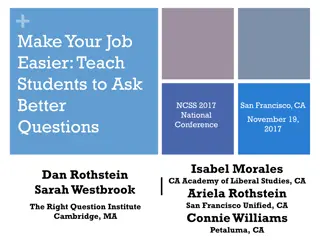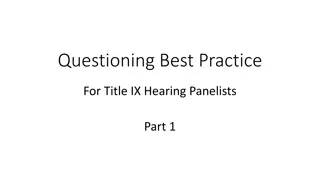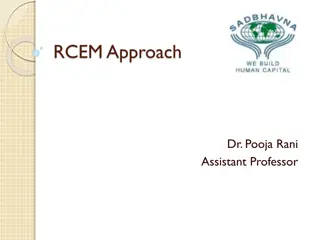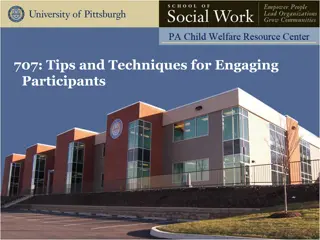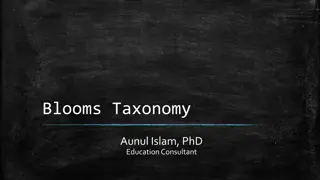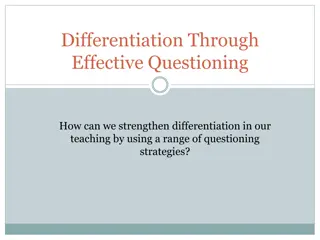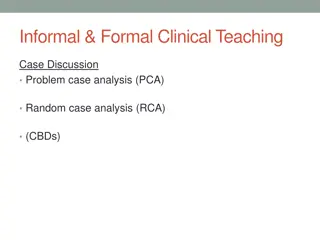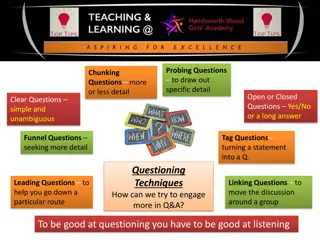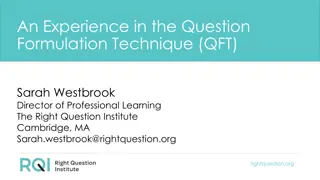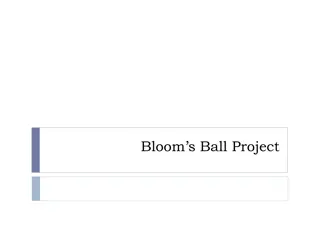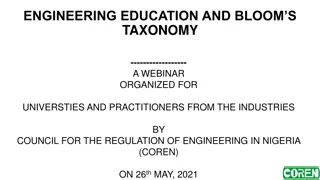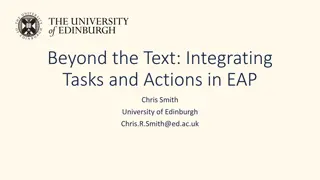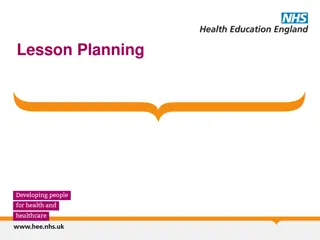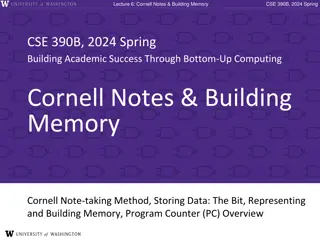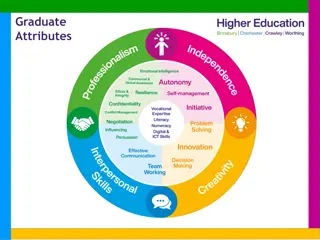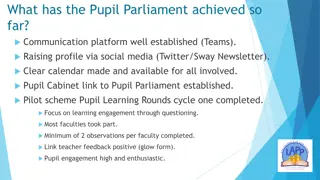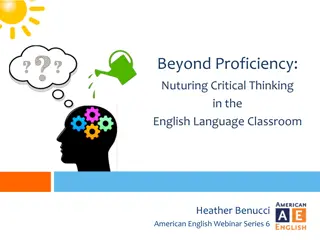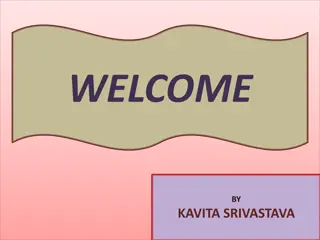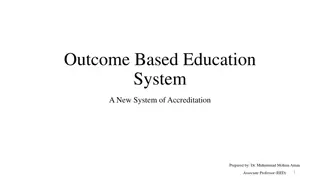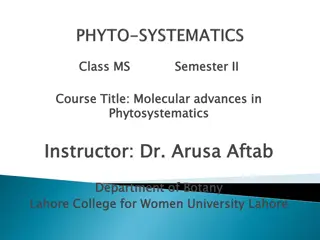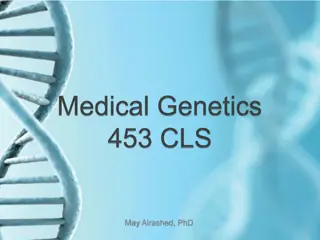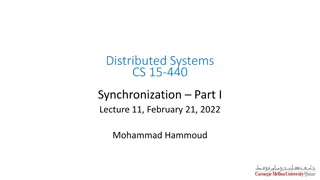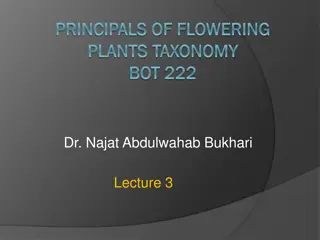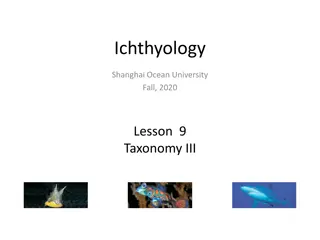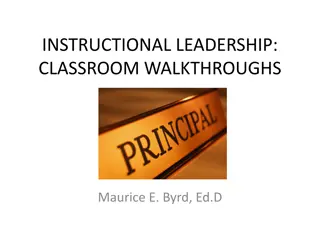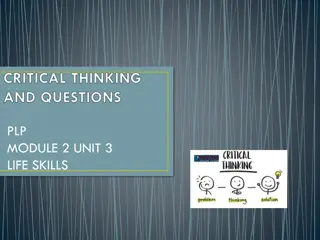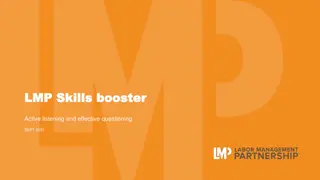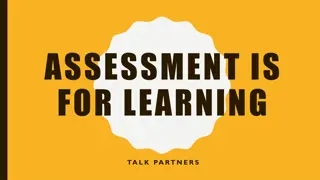Enhancing Classroom Questioning Using Bloom's Taxonomy
Bloom's Taxonomy, developed by Benjamin Bloom in 1956, offers a framework for educators to set educational goals and assess students' understanding. This taxonomy consists of different levels - Remember, Understand, and Apply - guiding teachers to ask questions that promote critical thinking and deeper learning in the classroom.
Download Presentation

Please find below an Image/Link to download the presentation.
The content on the website is provided AS IS for your information and personal use only. It may not be sold, licensed, or shared on other websites without obtaining consent from the author. Download presentation by click this link. If you encounter any issues during the download, it is possible that the publisher has removed the file from their server.
E N D
Presentation Transcript
TEACHER CONTENT How to Use Bloom's Taxonomy TO ASK BETTER QUESTIONS IN THE CLASSROOM an educational topic (c) The ETI Academy 2023
Let's begin... What is Bloom's Taxonomy? In 1956, Benjamin Bloom, along with fellow contributors, developed and published a framework of educational goals that has since been used by teachers and college instructors in the K-12 education system worldwide.
Bloom's Taxonomy c.1956
Bloom's Taxonomy c.2001
Let's ask... Why Use Bloom's Taxonomy? Bloom s Taxonomy is often referenced because it guides educators with the approaches to identifying what goals students of varying levels can achieve and how to create plans to meet them.
Level 1 - Remember In this level students are expected to show that they remember previous knowledge gained. At this stage the teacher can ask questions to see how much of the information was retained before moving on to new information. Teachers may begin asking questions by using actionable words such as: tell, list, define, describe, match, identify, state.
At this level students are capable of showing that they have understood the concept of the activity or problem, by being able to restate the activity or problem in their own words mentioning the main idea and details needed for understanding. Teachers may use the following actionable words to have students demonstrate they understand. Level 2 - Understand Teachers may ask questions that begin with: explain, give an example, defend, infer, predict, rewrite, summarize.
Level 3 - Apply At this level students are ready to apply the new knowledge gained through words or actions. Teachers may use the following actionable words to have students show how they can apply new knowledge gained. Teachers may ask questions that begin with: apply, demonstrate, show, prepare, produce, relate, solve. (c) EduKitchen - Recipes for Learning 2023
At this level students are ready to further explore deeper meanings behind knowledge gained- specifically asking why or how this information is relevant to themselves and society in general. Level 4 - Analyze Teachers may use the following actionable words to have students show how they can analyze new knowledge gained. Teachers may ask questions that begin with: analyze, compare, contrast , identify, illustrate, outline.
Level 5 - Evaluate At this level students are ready to form their own judgements on new knowledge gained and how they may relate the knowledge to their benefit both inside and outside the classroom. Teachers may use the following actionable words to have students show how they can evaluate new knowledge gained. Teachers may ask questions that begin with: evaluate, conclude, justify, relates, summarize, support
Level 6 - Create At this level students are ready to use their critical thinking skills to create ways to show how they have benefited from new knowledge gained. Teachers may use the following actionable words to have students show how they can create ways to benefit from new knowledge gained. Teachers may ask questions that begin with: create, devise, design, generates, modify, organize, plan, rearrange, reconstruct, reorganize.


